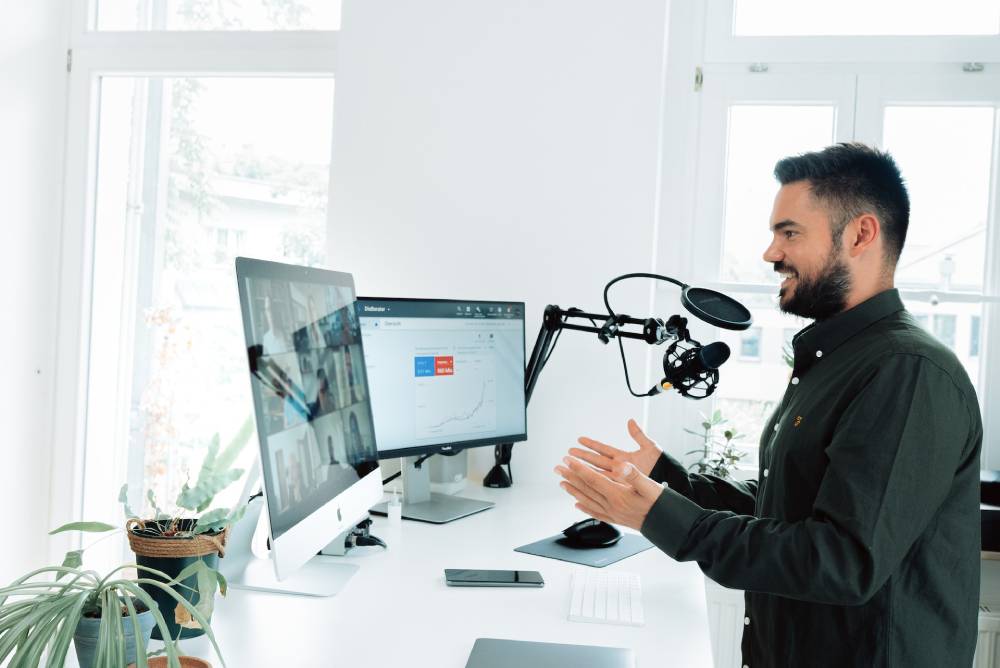Maximizing Conversions: How to Craft a Compelling Sales Webinar
Webinars are one of the fastest ways to connect with your audience and test product-message fit. They also open a window into your target market’s questions, concerns, and language.
Webinars are seeing a resurgence as one of the most effective marketing tools sales representatives can use to move prospects down the funnel and close deals. However, you must ensure that your sales and marketing teams are in sync to get the most out of these webinars.
Identify Your Audience
The best webinars are tailored to specific buyer personas. They’re designed for buyers at a particular stage in the conversion funnel — awareness, research/exploration, comparison, or purchase. It helps your sales team understand what prospects are looking for so they can better answer their questions and close the deal.
Identifying your audience will also help you craft more effective promotional materials and webinars. For example, if your target audience is small businesses, you can focus on promoting your webinar via social media or by leveraging paid ads in relevant channels.
You can also include a call-to-action to direct prospects to the registration page for more information on your products or services when promoting the webinar. For instance, if you’re selling an expensive product like a training course or online program, you can direct your audience to a form where they can book a live demo with one of your sales reps.
This way, prospects can get all their questions answered before purchasing. It’s a great way to build trust and credibility with potential customers!
Plan Your Webinar
A sales webinar is like a symphony: the different parts must all work together to create an enthralling performance. That means planning and preparing the right content before your presentation. Start by defining your objectives.
Whether generating leads, educating your audience, or building brand awareness, establishing your goals will help you craft the right content and structure for your event. Next, choose a webinar platform that meets your needs. Consider features such as sharing screens, presentations, videos, web pages, chat and question tabs, and real-time polls.
Finally, plan your call to action. Ideally, your webinar will transition to your offer naturally after you’ve provided value. For example, around the 40-minute mark, you could begin highlighting your training program or course.
Be sure to include social proof and a preview of the system so your audience is more likely to sign up. Suppose they don’t design a follow-up email sequence and ask to schedule a call to understand more about their reasons. Those insights can help you refine your future marketing efforts.
Prepare Your Content
To ensure a successful webinar, prepare a list of questions your audience will likely ask. Answering these questions live on the webinar will help build credibility and trust. You can even use tools that allow attendees to submit questions and upvote them based on their relevance.
It will make it easier for you to respond to the most popular questions in real-time — boosting engagement and conversions. During the webinar, make sure you have a compelling call to action. For example, ask your audience to sign up for your email list at the end of the presentation or offer a free e-book in exchange for their contact information.
It will increase your chances of them remaining on the call until the future and will help you convert more sales. Using scarcity tactics such as limited-time bonuses can also be effective in getting them off the fence and into your program.
Host the Webinar
You need to start with the right content. That means creating an effective webinar program, including pre-webinar and ongoing follow-up messaging. You also need to plan out the format of your event. You may have a single speaker or include a panel discussion or audience questions. And it would help if you considered how much time you’ll need to allow for each presentation segment.
Once your webinar program is nailed down, you can send out invites and promote it. You should also set up a webinar recording and on-demand access, as nearly 25 percent of attendees watch the recorded version of their webinars. Remember to add sharing links for your webinar attendees so they can easily pass along the link to their colleagues.
Follow Up
A webinar’s most overlooked part is following up with prospects and customers after the event. However, it’s one of the most effective ways to move your audience further down the sales funnel and increase conversions.
The first follow-up email should thank attendees for their attendance and provide any resources they expected to receive. It’s also an excellent opportunity to ask for feedback and request a call or meeting with your team.
You should also send a short series of follow-up emails to those who didn’t attend. These people may need more time to warm up to your solution or couldn’t participate in the webinar. You can nurture them with content that educates them about the problem you’re solving and provides examples of how your solution will help them.
However, it’s essential to refrain from bombarding them with multiple offers. If you do, they’ll likely mark your emails as spam and turn away. AI-powered content marketing software can help you automate and personalize your follow-up emails to boost engagement and conversions.

